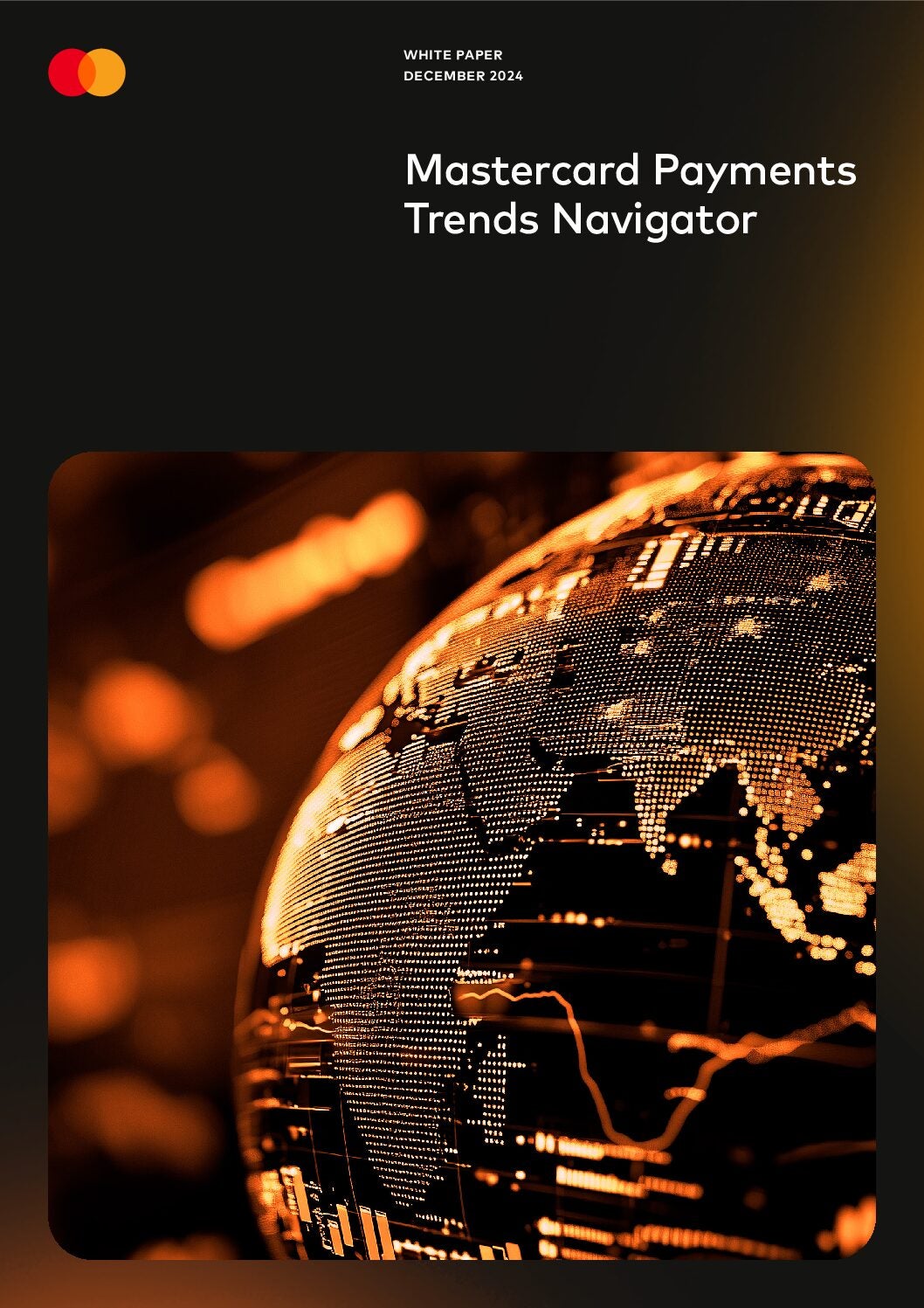
Payments have long been at the heart of commerce, evolving from cash and paper-based transactions into complex digital networks. As the global economy increasingly migrates into the online world, the sophistication of payment infrastructure has grown rapidly with it.

In 2025, several powerful trends are dominating the financial landscape. They are influencing how businesses operate, consumer management of money and the complexion of competition between financial institutions. Driven by technological innovation, shifting consumer behavior, and new forms of data and intelligence, payments are – now more than ever – the central hub of financial activity. Understanding how these trends are set to reshape the payment world is crucial.

Access deeper industry intelligence
Experience unmatched clarity with a single platform that combines unique data, AI, and human expertise.
The rise of alternative payments
First, consider the shift towards alternative payment methods — digital wallets, QR codes, peer-to-peer transfers, and ‘buy now, pay later’ (BNPL). These have moved from niche adoption to mainstream acceptance. Worldwide, digital wallets alone have propelled global card transaction volumes to unprecedented heights. QR-based transactions, particularly popular in emerging economies, now boast billions of users, reflecting a substantial shift away from traditional cards or cash.
BNPL, meanwhile, continues to see substantial growth, spurred by instant credit access and straightforward repayment schemes. These new payment methods are quickly becoming foundational to a transformed consumer experience, capable of capturing detailed insights into spending habits and personal preferences. This, in turn, sets the stage for further expansion of hyper-personalized commerce.
AI-powered personalization
On the topic of hyper-personalization, reams of customer data held by financial institutions and fintech firms are enabling them to embrace artificial intelligence (AI) like never before. Using advanced analytics, issuers may identify customers at risk of churn, offering targeted rewards and tailored incentives to retain valuable clientele. According to figures from the Mastercard Payments Trends Navigator report, customer engagement can be boosted by up to about a third through targeted reactivation marketing campaigns.
AI is making inroads into all areas of the interaction between consumers and payments. Historically, personal finance management (PFM) tools were passive — simple dashboards tracking spending patterns. Today, consumers demand active engagement from their finance apps, like automated insights and actionable recommendations to enhance their financial well-being. Providers that deliver sophisticated, personalized experiences by leveraging the power of AI will distinguish themselves in a crowded marketplace.
Alternative credit: a data goldmine
Credit underwriting has traditionally relied on established data — credit bureau reports, payment histories, and debt-to-income ratios. Yet a seismic shift is underway, driven by lenders’ growing reliance on alternative credit data. Bank transactions, social media activity, e-commerce behavior, and even customer reviews are providing lenders with richer insights into a borrower’s financial health and creditworthiness.
In addition to broadening financial access – crucial in underserved regions – alternative data sources also enhance credit risk management, allowing lenders to price loans more accurately and reduce defaults. For small businesses and underserved borrowers, alternative credit data has become a lifeline, unlocking financial access previously denied by conventional underwriting. Paired with sophisticated AI-driven assessments, it is an innovation promising to substantially increase financial inclusion worldwide.
The changing landscape for merchants
Payment technologies, once dominated by larger merchants, are democratizing. Technological innovations have dramatically lowered barriers to entry, enabling even micro-merchants to accept a variety of digital payments seamlessly; crucial at a time when 70% of global merchant acquiring revenue comes from businesses with fewer than 250 employees. This shift has significant implications, as smaller businesses now have access to payment acceptance infrastructure previously reserved for major players.
And payment systems are evolving from transactional interfaces into personalized checkout experiences. Leveraging predictive analytics, merchants can offer tailored products, prices, and payment plans in real-time, significantly boosting consumer satisfaction and increasing conversion rates.
Interoperability
A critical, though often overlooked, payment industry trend is the movement toward global interoperability. Payment rails, historically fragmented across geographies and payment types — real-time, batch, card networks, and blockchain-based channels — are beginning to interconnect. Emerging technologies and standardization efforts are breaking down borders between once-isolated payment ecosystems, enabling seamless global transactions.
Interoperability, driven by common standards and real-time payment infrastructures, is reducing friction and costs, particularly in cross-border commerce. This interconnectedness also facilitates rapid financial innovation, allowing fintechs to scale quickly, collaborate, and introduce new products worldwide without cumbersome integrations.
Security through intelligence
As with many of the key trends listed above, the landscape of payment security – always a critical concern, and never more so than in a world of growing threats from cyberspace – is shifting from reactive to predictive.
Modern payment ecosystems leverage artificial intelligence to detect anomalies proactively, thwarting fraud in real-time. AI-driven security platforms increasingly analyze transaction patterns, anticipating threats and neutralizing fraud before it occurs, thus bolstering trust in digital payment methods.

Together, it all points in a clear direction. Payments have gone beyond serving a purely functional role. They now represent critical nodes within increasingly interconnected financial ecosystems. They shape how individuals and businesses interact with money, identity, and data.
The financial ecosystem of 2025 and beyond will be smarter, more inclusive, and significantly more agile. Banks, fintechs, merchants, and regulators must continue adapting to these rapid shifts or risk being left behind as competitors across the space seize opportunities presented by rapid evolution. Industry leaders like Mastercard are using their expertise to produce insights that can help firms of all sizes navigate change. Fill in your details to find out more.



